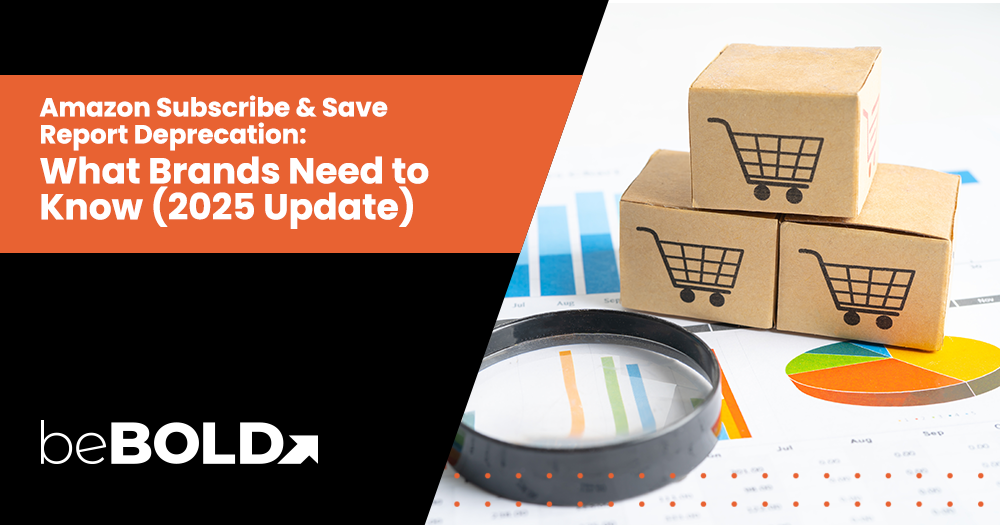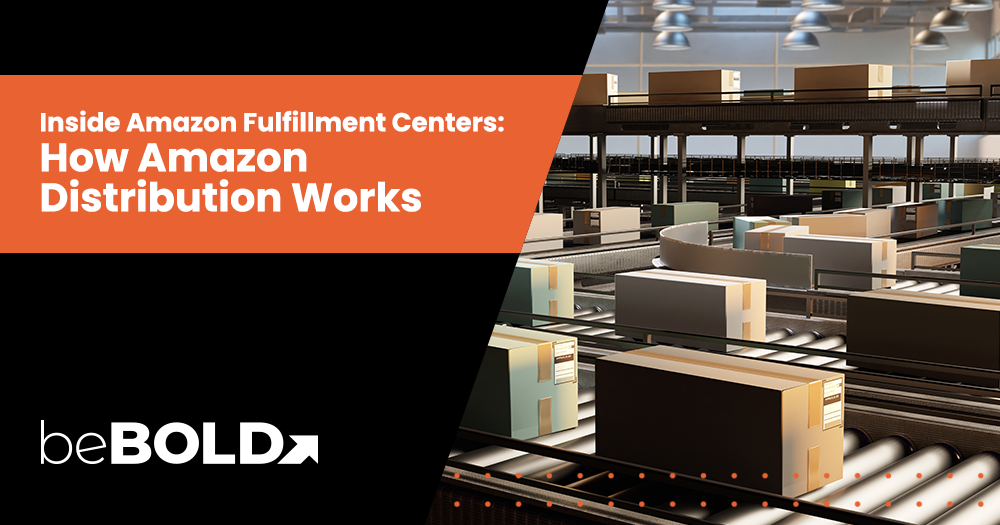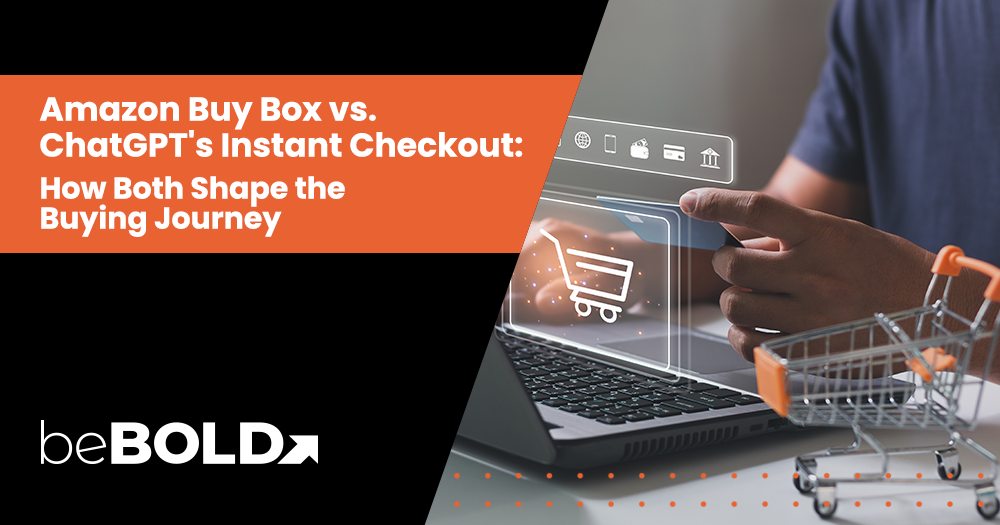Amazon’s Rufus AI is changing the way shoppers search, compare, and buy—making context, clarity, and complete listings more important than keywords alone. Learn how you can adapt so your products have the upper hand when it comes to Rufus’ recommendations.
Key Summary
- Rufus is Amazon’s ultimate shop assistant, listening like a friend, searching like a pro, and guiding shoppers to what they need 24/7. 🛒
- It’s powered by advanced AI technology, combining large language models (LLMs), retrieval-augmented generation (RAG), and visual analysis to deliver spot-on recommendations. 🤖
- Shoppers can ask natural questions like “best blender for smoothies in small kitchens” or “BPA-free olive oil sprayer that doesn’t leak” and get accurate answers without perfect keywords. 💬
- Rufus gathers information from product listings, reviews, Q&A threads, Enhanced A+ content, and trusted external sources to build complete responses. 🌐
- Thin, incomplete, or keyword-stuffed listings are less likely to show up, while context-rich, helpful content is more likely to be featured. 👑
- Rufus “reads” product photos through visual label tagging, making clear angles, lifestyle images, and infographics valuable for visibility. 📸
- Detailed, positive reviews and active Q&A threads can increase the chances of your product being recommended. ⭐
- Upcoming features may include AI-generated shopping guides, autonomous shopping agents, and seamless ad integration. 🚀
- Structuring listings so both shoppers and Rufus can easily understand them increases the likelihood of being recommended. 🏆
What is Amazon Rufus AI?

Source: Innels YouTube
Unlike your usual voice assistants, Rufus was built to be both a shopping assistant and a catalogue expert. Think of Rufus AI as an enthusiastic shopkeeper who is willing to pull out all the stops to get you what you need 24/7.
Combining natural language processing, visual understanding, and real-time data retrieval, Amazon’s built-in AI shopping assistant aims to help customers shop more intuitively. Today, Rufus appears in multiple touchpoints across the Amazon experience, including search results, category pages, and product detail pages, allowing shoppers to:
- Ask complex, conversational questions (“What’s the best water filter for camping in cold weather?”)
- Receive curated product recommendations tailored to their budget, preferences, and purchase history
- Compare similar items side-by-side without opening multiple tabs
- Get instant answers to compatibility, usage, and warranty questions

To understand why Rufus is such a leap forward, it’s helpful to see how it works behind the scenes.
How Does Amazon Rufus AI Work?

Source: Amazon
Think of Rufus as the behind-the-scenes brain of Amazon, always learning, always refining, and always trying to give shoppers exactly what they want. It’s powered by a tech trifecta: large language models (LLMs), retrieval-augmented generation (RAG), and multi-modal analysis.
That might sound technical, but here’s what it really means for you as a seller: Rufus can read between the lines of what a customer types, pull the most relevant info from multiple sources, and respond in a way that feels like a real conversation.
Here’s the play-by-play:
Intent Recognition
Rufus doesn’t just match keywords. It figures out why exactly someone’s searching, picking up on tone, qualifiers, and context. For example, “best blender for smoothies in small kitchens” will get different results than “affordable blender for meal prep.”
Data Gathering
Once it knows the intent, Rufus pulls in data from all over, including Amazon’s entire product catalog, customer reviews and seller Q&A threads, brand-provided PDP content, and trusted sources across the web.
Semantic Matching
It then finds the listings that best fit the meaning of the query, not just the exact words used.
Conversational Output
The results aren’t just a product list. Rufus gives human-style explanations, side-by-side comparisons, and pros and cons to help the shopper make a faster decision.
Continuous Learning
Every click, purchase, and feedback signal helps Rufus improve over time, making its future recommendations even sharper.
Bottom line: with Rufus doing this kind of heavy lifting, sellers can’t just think about “keywords” anymore. You need listings that answer real shopper questions, use natural language, and provide complete, structured info, so that Rufus can find you and recommend you.
Why Does Rufus Matter for Sellers and Brands?

If you’ve been selling on Amazon for a while, you know the old playbook: optimize your listing with the right keywords, keep your click-through rate up, and throw some ad spend behind it. For years, Amazon’s A9 search algorithm rewarded exactly that.
But Rufus is rewriting the rules. Here’s what’s changing:
- Ads don’t always dominate anymore – In conversational searches, Rufus sometimes puts organic recommendations ahead of paid placements. Yes, Sponsored Products and Sponsored Brands can still show up, but they’re woven into the chat instead of always leading the pack.
- Content quality is the new king – If your listing is thin, incomplete, or poorly written, Rufus is far less likely to show it. It wants listings that fully answer a shopper’s question.
- Images carry more weight – Rufus actually “looks” at your product photos. Clear angles, clean backgrounds, lifestyle shots, and infographic callouts can all help you get discovered.
- Reviews and Q&A are now part of the ranking equation – Rufus scans these sections to help it answer shopper queries, so keeping them active, positive, and detailed is critical.
The takeaway? Your visibility isn’t just about keywords anymore. If your listing speaks the shopper’s language and gives Rufus all the context it needs, you’re far more likely to land in its recommendations.
Key Features and Capabilities of Amazon Rufus AI

Now that we’ve covered why Rufus is such a game-changer, let’s break down the features that make it different from anything Amazon’s rolled out before — and why each one matters if you’re selling on the platform.
- Conversational AI Shopping Assistant – Rufus talks to shoppers the way a great in-store rep would. Instead of rigid search terms, customers can type (or say) something like, “What’s the best BPA-free glass olive oil sprayer that doesn’t leak?” and refine their request on the fly. No perfect keyword match required.
- Context-Aware, Semantic Understanding – Rufus isn’t just looking at words; it’s looking at meaning. Ask for a “quiet vacuum cleaner for hardwood floors in a small apartment,” and it factors in size, noise level, and floor type, not just “vacuum.”
- Product Clarification & Recommendations – When shoppers hit a wall comparing features or figuring out compatibility, Rufus steps in with plain-language explanations. It can highlight what’s dishwasher-safe, whether something works with a certain model, or which version is better for a specific use case.
- Multi-Channel Integration – Rufus lives across the Amazon ecosystem, homepage search, category browsing, PDP chat widgets, and even in some post-purchase support flows, meaning your listing could surface in multiple shopper touchpoints, not just traditional search results.
- Augmented with Real-Time Web & Amazon Data – It doesn’t just rely on static listing data. Rufus taps into live pricing, availability, customer trends, and even select external web sources to give shoppers up-to-date answers.
- Streamlined Decision-Making – Instead of forcing shoppers to click ten different listings, Rufus compares features, summarizes pros and cons, and points them toward a short list of best-fit options.
- Refuses or Redirects Sensitive Queries – If a shopper asks something unsafe or irrelevant, Rufus politely declines or routes them to the right place, protecting both the customer experience and your brand.
- Improving Continuously via Feedback – Every upvote, downvote, click, and purchase teaches Rufus what’s working, so its recommendations get sharper over time.
- Structured, Comprehensive Listings – This is the seller's gold mine. Rufus rewards products that check every box: fully optimized titles, benefit-rich bullet points, accurate attributes, high-quality imagery, robust backend keywords, and Enhanced A+ content. The more complete your listing, the more “Rufus-ready” it becomes.
Every one of these features ties back to discoverability. Now, it’s time to learn how you can optimize your brand to give Rufus the right context, clarity, and visuals it needs so you can show up when shoppers are in buying mode.
eCommerce Optimization Guide for Amazon Rufus
If you want your products to shine in a Rufus-powered Amazon, you’ve got to think about two audiences: the human shopper and the AI that’s guiding them. Your listing needs to be easy for people to read and structured so Rufus can interpret it perfectly. Here’s how to get there:
1. Optimize Product Titles & Bullets for Conversational Queries
Stop writing titles like they’re for a database. Start writing them like a helpful salesperson would describe your product. Instead of “Cordless Drill,” try “Compact cordless drill with lithium battery for home DIY projects.” That way, you’re matching the natural language shoppers use when talking to Rufus.
2. Feed Data to Get More Visibility
Fill out every field in Seller Central, even optional specs. Rufus works best when it has a complete picture of your product, and missing data points can mean you don’t show up for certain queries.
3. Leverage Enhanced A+ Content & Rich Media
Rufus doesn’t just “read” your text. It can also interpret your images using visual label tagging. Enhancing your A+ Content doesn’t only mean you’re adding pretty diagrams, infographics, or lifestyle shots. They also work as data points Rufus uses to decide if your product is a good fit for a shopper’s request.
4. Improve Review & Q&A Quality
Positive, detailed reviews and active Q&A threads feed Rufus’s understanding of your product. Encourage customers to share specific use cases in their reviews, and answer questions quickly to build trust and relevance.

Source: WebFX
5. Strengthen Backend Keywords with Context
Don’t just list generic terms. Include synonyms, related phrases, and use-case keywords so Rufus can connect your product to more nuanced shopper queries.
6. Use Structured Data for Features & Specs
Details like dimensions, material type, and warranty info should be consistent and easy to parse. Rufus pulls from structured data to answer specific “Does this fit…” or “Is this compatible with…” questions.
7. Add FAQ Sections
Think ahead — what will shoppers ask before buying? Add those questions (and clear answers) right in your listing. Rufus often surfaces this content directly in responses.
8. Continuously Monitor AI-Driven Search Trends
The way people shop changes fast, and so does how they phrase questions. Keep tabs on trending queries in your category, stay updated with the latest AI-driven sales tactics, and be ready to update your content regularly to stay relevant.
9. Build Brand Authority Off-Amazon
Rufus can reference trusted off-Amazon sources. Publishing high-quality content on your website, social media, and blogs can boost your credibility inside Amazon search too.
10. Prepare for Multi-Modal AI Inputs
Your images aren’t just for show. They’re part of your SEO now. Make sure your photography communicates key features so shoppers (and Rufus) don’t have to dig for them.
11. Be Aware of Challenges & Criticisms
Rufus is still evolving. Some sellers report occasional inaccuracies or bias toward Amazon brands, and ad placement rules are still shifting. Keep a close watch so you can adapt quickly.
By following these guidelines, sellers can future-proof their listings for Amazon’s ongoing AI evolution.
What’s Ahead: Future of Amazon & Rufus
Rufus isn’t the end-all, be-all, but it’s the first big step toward Amazon’s bigger AI vision. Over the next few years, Amazon is likely to roll out features that will completely reshape how shoppers discover and buy products, including:
- AI-generated shopping guides – Imagine searching for “home espresso machines” and being served a fully written, category-level guide that explains the pros, cons, and must-know features, all powered by Rufus’s generative AI. This could become the go-to starting point for shoppers new to a category.
- Autonomous shopping agents – Amazon is already experimenting with AI agents that could go beyond recommendations and actually add products to a customer’s cart based on their purchase history, preferences, and even seasonal needs.
- Deeper ad integrations – Expect paid placements to blend more seamlessly into AI conversations, appearing as natural, relevant suggestions rather than obvious ads. For sellers, this means your ad copy and targeting will need to feel as contextually relevant as organic recommendations.
For sellers, staying ahead means anticipating these changes and creating an AI-friendly structure in every listing today, so you’re ready when these capabilities start scaling globally.
Ready to Win in the Rufus Era?
At beBOLD Digital, we specialize in helping brands adapt to every shift in Amazon’s algorithms, from classic A9 changes to today’s AI-powered search with Rufus. Our Amazon marketing experts can optimize your listings for semantic relevance, visual impact, and conversion, ensuring Rufus sees (and recommends) your products. Whether you need keyword strategy, Enhanced A+ content, or full-scale account management, we’ll make sure you’re not just keeping up with Amazon’s AI updates — You’re leading the pack.
Contact beBOLD Digital today and let’s make your brand Rufus-ready.
Frequently Asked Questions About Amazon Rufus
Why is Amazon AI called Rufus?
Amazon named it after one of its beloved early office dogs, Rufus. Internally, the dog was known for “guiding” employees through the office, so the name is a nod to loyalty, guidance, and always being ready to help.
Does Rufus replace SEO?
Not at all, but it changes the rules. You still need SEO, but instead of focusing only on keyword density, you’ll want to optimize for context, clarity, and completeness. Think: Does your listing fully answer a shopper’s likely question? Can Rufus pull the right details without guessing?
Can Rufus pull my product via review or Q&A?
Yes, and this is a big opportunity. If your reviews mention specific use cases and your Q&A is packed with helpful, accurate answers, Rufus can surface your product in its recommendations even when the main listing copy doesn’t match the query exactly.
How do visual elements impact Rufus?
A lot. Rufus uses image recognition to “read” labels, features, and context from your product photos. That means clear images, lifestyle shots, and infographic overlays aren’t just nice-to-haves; they can directly affect discoverability.
Is Alexa still relevant?
Yes. Alexa is still Amazon’s go-to for voice-first experiences. Rufus is focused on in-platform shopping and product discovery, so think of them as complementary tools rather than replacements.
Can Rufus' recommendations be biased toward Amazon's own products?
Possibly. Just like in traditional search, there’s concern that Amazon’s private-label products could get extra visibility. That said, well-optimized, highly relevant third-party listings can still compete.
Is Rufus reliable in critical or sensitive contexts?
Rufus has guardrails to prevent unsafe or inappropriate recommendations. But, like any AI in its early stages, accuracy in highly sensitive or niche contexts is still a work in progress, so sellers should monitor how their products are represented.










Comments